Many people lead a healthy lifestyle with health disorders due to the presence of parasites.Highlight the body (appropriate nutrition, physical exercises, hardening processes) without eliminating the body from parasites does not create a clear positive effect.According to the World Health Organization, Helminth is located not only in the digestive tract, but also in important organs: brain, heart, lungs, liver, kidney.Introduction in the processes of their lives distinguish special substances - toxins are toxins and strong allergens.It is the simplest, mushrooms and helminths are the mechanism of activating many chronic diseases: cholecystitis, oysters, pancreatitis, colitis, diabetes, bronchial asthma, dermatitis in allergies.
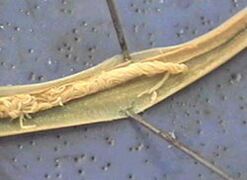
Chronic fatigue, discomfort and anxiety, hyperactivity in children, anemia, crispy nails and hair, problems, headaches, appetite disorders, reduced immunity - this may be a signal of the current disease.With a long time of parasites in the human body, the immune system suffered a lot.In the process of continuous struggle with foreign antibodies, it was exhausted, which was the development of secondary immunodeficiency.Diseases with parasites lead to hypovitaminosis, decline of microorganisms: potassium, copper, manganese, selenium, zinc, magnesium, silicon;Violation of hematopoietic, hormonal failure, permeability of blood vessels is violated, protected against body cancer.
In many millennia, people, mainly plant foods, have received natural active ingredients, antibiotics and micro -resistance to it.The reduction in wildlife consumption, fruit, berries, replacing their vegetables and fruits, heat and industrial treatment has led to a natural volatile consumption and antibiotic consumption.As a result, a person becomes easy for many microorganisms.The in -depth development of the pharmaceutical industry produces antibiotics leads to reduced immunity.
Determine parasite
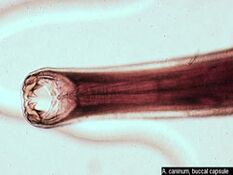
Parasites (from GreeceParasites arise during the historical development of organisms from freelance forms.Their adaptation with some conditions of life requires simplifying their organization, the development of special fixed organs, increasing the development of genital organs, breathing, which can survive in a carefree environment.The parasite includes many helminths, mushrooms, viruses, protozoa, worms, crustaceans, insects, insects.The parasite owner may be the bacteria, the simplest, plants, animals and humans.Parasites undergo a complicated development cycle: Sometimes they need to change 2-3 owners whose body is intermediaries (helminths that pass larval stages) or final (helminths become mature and invasive).Parasites cause weakness and decline in the host body, causing a number of diseases.
Helminants can parasitize all human tissues and agencies, but the most common place of their localization is food sugar.Bull and tapeworms of pork, a broadband being fixed in the small intestine, also parasitic into Ascaris.The dwarf Tabbell is mainly located in the third part of the small intestine, Vlasovs - in the large intestine, Opistorchis - in the bile segments of the liver and pancreatic tubes, the battery worm - in the lower parts of the thin and in all parts of the large intestine.Therefore, the distribution of different types of helminths along the gastrointestinal tract to seek the most favorable living conditions provides them with individual survival and creates conditions for the development of some types of human body.
Classify
By distributing:
- Ubiquette - Meet everywhere.
- Tropical - distributed in tropical climates.
According to biological and epidemiological characteristics: Geohelminths - a disease in which the first helminth is developed in the human body, and then on a non -living substrate, more often in the ground.Biohelminths is a disease in which a biological cycle of helminth development is necessarily taking place in the body of other creatures, except one person.Distinguish between the final owners, in the body that helminths develop to the stage of sexual adulthood, as well as intermediaries, in which parasites are at the stage of larvae or its reproduction is not sex.A person is usually the last server, less often - intermediaries.Worm disease is a disease in which parasites are distinguished from the human body from maturity or almost mature, because it may be infected with other people or re -infection.
Depending on the localization of the parasite in the body: education - living in the intestinal cavity and other compartments of a person (for example, ascarides, ice) and tissue - live in tissues.
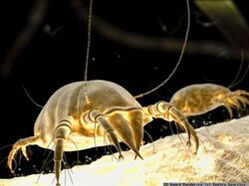
At the place of staying with the owner:
- Outside (mosquitoes, blinds, leeches, lice).
- Internal (helminth disease):
- Round worms (nematodes - ascarides, vlasov, pinworms, strungloids);
- Flat worms:
- Trematodes (Cat Bickelter, Schistosome);
- Cestodes (Ribbon Worms - Bull and Pork tapeworms, Tabbell Dwarf, Ribbon, Echinococcus).
- Bacteria (staphylococcus, streptococcus).
- Protosis (Amoebas, Lamblia, Trichomonas, usually the owner of Chlamydia and AIDS virus).
- Mycoses (Fungal disease) -Example, Candida.
How to adapt the parasites
- A long life (helminths living in the body for many years, and sometimes as many as the owner of the parasite life);
- The ability to prevent or revise the immune response of the host body (the state of immunodeficiency, the conditions are created to penetrate the pathogens from the outside, as well as to revive the internal focus of the infection);
- Many types of helminths, go into the gastrointestinal tract, distinguish anti --enzyme drugs, help them escape death;The digestive process is disturbed, different allergic reactions in gravity appears: urticaria, bronchial asthma, atopic dermatitis;
- Development phase (eggs, larvae, change of owners);
- The ability of eggs for many years to survive in the external environment;
- Sexual reproduction in which genetic information is exchanging, and this is the highest stage of development, resulting in heterogeneous population growth, meaning that parasites become less vulnerable;
- The absence of immune methods, because the immune reaction is weak and unstable;
- Widely introduced, many habitats (water, earth, air, plants and animals).
How to parasitically into the body
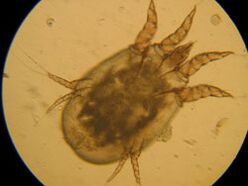
You may be infected not only through dirty hands.Animal hair is a worm (Ascaride), Lamblia.The egg worms of the battery have fallen from wool still exist for 6 months and through dust, toys, carpets, underwear and beds and hands falling into the road.The dog through wet breath disperses the egg at a distance of 5 meters (cat - up to 3 meters).Dog's fleas also withstand deep eggs.Askarid eggs penetrate the body through vegetables, fruits, berries, green vegetables, dirty hands and also spread to flies.And incorrect cooked cooked meat or homemade pork fat is a trichinellosis infection;Bad salty fish, caviar - opisthorch disease and broadband.
Therefore, there are several ways to enter the body:
- Eating (through foods infected, water, dirty hands);
- contact with households (through family goods, from family members infected with diseases and livestock);
- via blood insects;
- Activity (of which larvae penetrate through the skin or mucous membrane while exposed to infected soil, when bathing in open tanks).
Prevent
Here are a few rules that need to be followed to prevent the penetration of the parasite into the body:
- Do not drink water from natural sources and in a strange area.
- You can eat vegetables and fruits without washing.
- You should be careful with mosquitoes, ticks and other blood -causing insects that can be parasitic.Need to use special protective facilities against them, and in places there are many of them, wearing pants and shirts with a long sleeve.
- Before a trip to some countries, vaccination from typhoid, plague, tropical fever and other infectious diseases.Going to places where malaria mosquitoes are found, you need to take anti -anti -drugs.Collected on a long trip, where it can be tick, it is important to vaccinate the frequency encephalitis.
- Do not allow children to hug and kiss other dogs, cats and pets. Health care of pets - Take deworming courses.
- Follow the personal hygiene rules, maintain the cleanliness of the house.
- Periodic anti -opposition courses for the whole family.
Children's invasion and parasites
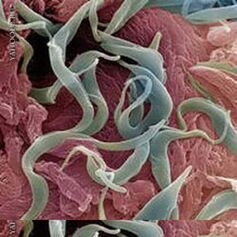
Those who are most vulnerable to the effects of parasites are children.They are infected with many types of parasites through dirty hands, sand, soil and water.Sometimes, the child's infection may occur in the uterus, because the simplest, bacteria, viruses, Candida and Heelminth larvae can penetrate the fetus through the placenta with blood flow, as well as during birth through the tube.Due to the expansion of their motor activity, at the age of 1.5-3, children may be infected at home, when walking, in kindergarten when exposed to polluted objects (street shoes, floors, toys, common areas), on the road (playing on sand boxes or on the ground), as well as in contact with animals (vagabonds or on the street).The high probability of the observed parasites of the parasite is not complied with hygienic rules (unwashed hands, eaten vegetables and fruits that have not been washed, eat raw water from natural ponds and swim in it).Only the eggs of worms and dwarf tapeworms are transmitted directly from one person to another.Eggs of other helminths so that cooked necessarily enter the body of an intermediate or appropriate environment - soil or water.At the age of 1.5-3, the scale of children with helminths can reach 80%.
More than 90% of all helminths in children are due to the intestinal parasitic nematodes in the intestine (Ascaris, Pinworms), parasitic glands in the intestinal wall or other organs (ankylostoma. In children, basic hygiene (those who are not treated with meat or fish are not enough, not treated with water, vegetables and water that are not exploited from natural lakes).
How can a child be infected?
The infection is done when the egg larvae enter the body.Eggs enter the environment with feces of people and animals infected.They have a microscope size, very resistant to different effects and can maintain vitality for a long time outside the body (in the soil, on the surface of the objects or products, in the folds of linen, on the skin).When in the child, worms pass, partially destroy, through the acid, ferocious environment of the stomach and activated in the intestine, in which the conditions of adult growth are the most favorable.Children with preschool and preschool are especially easily invaded, because they still have the perfect barrier of the gastrointestinal tract.
Measures to prevent helminths in children: For all family members to comply with hygienic rules, try to prevent the close contact of children and personal belongings with pets;On the street, it is important to ensure that children do not choose different objects;Prevent contact with animals;It is important to be imbued with children's personal hygiene skills (washing hands with soap behind the street and visiting toilets);Wet cleaning at home, washing with soapy toys, especially with the presence of pets, as well as toys brought from walking to the house;Vacuums, furniture and toys;Do not allow children and fruits that have not been washed, not enough meat and unprocessed fish, raw water from natural reservoirs.
Signs of the invasion of helminths in children
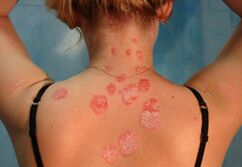
Typically, a child must guess the next invasion of indirect signs.The probability of the next invasion is very high if the child has symptoms such as saliva, nausea, reducing appetite or increased pathology, throbbing around the navel or without a certain position, appearing in the evening, meaningless likes, falling asleep and sleeping at night, accompanied by screams, awakening, "naughty", grinding teeth, itching in the bottom of the perineum.Normally, parasites lead to allergies of the body, skin reactions appear in the form of atopic dermatitis (as prescribed, it is stubborn, very difficult to treat with symptoms).If worms are found in a child or in one of the family members, it is necessary to treat the whole family to avoid the formation of the infection.In this situation, it is important to strengthen hygienic measures, especially to boil and iron on both sides of the bed and personal underwear.























